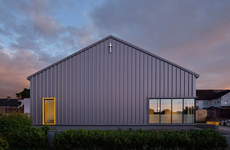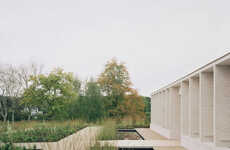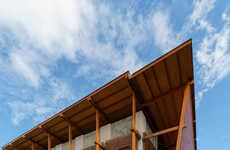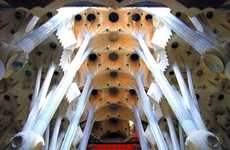
The Parish Complex Concept Features some Divine Design
Alex Scott — March 3, 2010 — Art & Design
References: progettospore.eu & plusmood
Travel through any big city and you'll see some pretty bizarre modern churches. Architecture for worship has changed drastically over the last century and the Parish Complex Concept is a testament to that.
Designed by Italian architecture firm Progettospore, the Parish Complex Concept, at first glance, looks like a series of conveyer belts. Look a little closer and you might assume it is some hillside home in Los Angeles, but not in ten guesses would you have called it a church.
However strange it may look, I like the Parish Complex Concept, so much so that if they put one in my city, I might just start going to Mass.
Designed by Italian architecture firm Progettospore, the Parish Complex Concept, at first glance, looks like a series of conveyer belts. Look a little closer and you might assume it is some hillside home in Los Angeles, but not in ten guesses would you have called it a church.
However strange it may look, I like the Parish Complex Concept, so much so that if they put one in my city, I might just start going to Mass.
Trend Themes
1. Modular Architecture - Designing and constructing buildings in modules or sections can be more efficient, cost-effective, and sustainable, while also offering greater flexibility in terms of usage and customization opportunities.
2. Innovative Worship Spaces - Creating unconventional and eye-catching places of worship can help attract younger generations and promote community engagement, as well as offer new forms of spiritual experiences and rituals.
3. Blended Functionality - Combining religious and secular activities, such as housing, healthcare, and education, within one interconnected complex can optimize land use and resource allocation, as well as foster social cohesion and interfaith dialogue.
Industry Implications
1. Architecture and Construction - Developing and implementing modular building systems and techniques can provide architects, builders, and developers with new business models, tools, and skills to meet changing market demand and regulatory requirements.
2. Religious Organizations - Exploring new ways of designing, organizing, and using worship spaces can help religious institutions attract and retain followers, build stronger communities, and advance social and environmental causes.
3. Real Estate and Urban Planning - Integrating religious complexes into mixed-use or urban renewal projects can create value for developers, investors, and residents alike, and help revitalize neglected or underutilized areas with a sense of purpose and heritage.
4.2
Score
Popularity
Activity
Freshness























